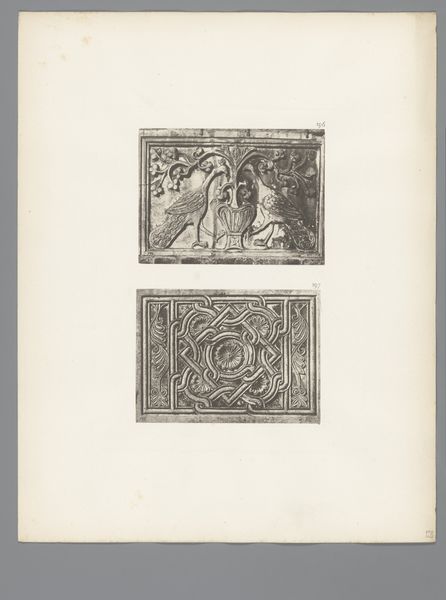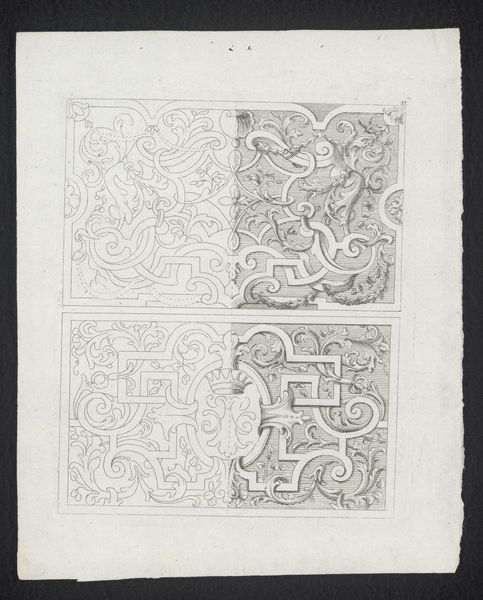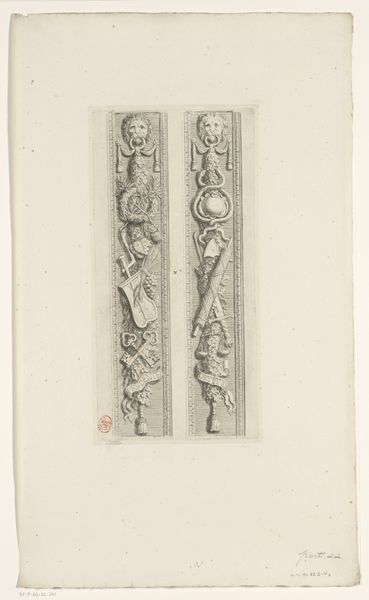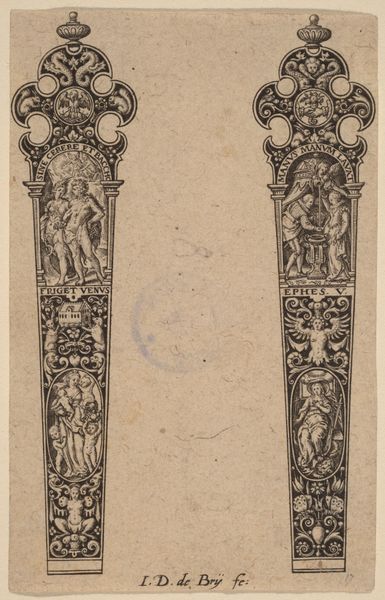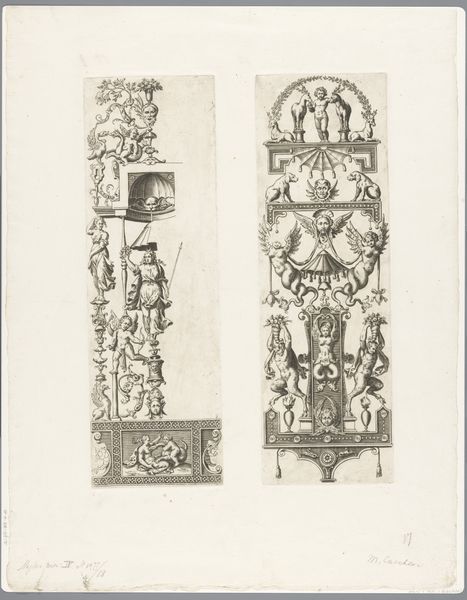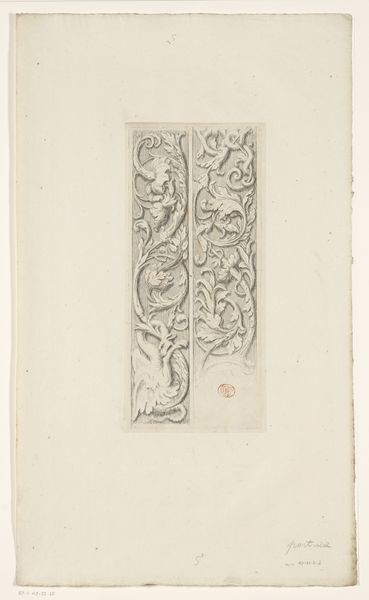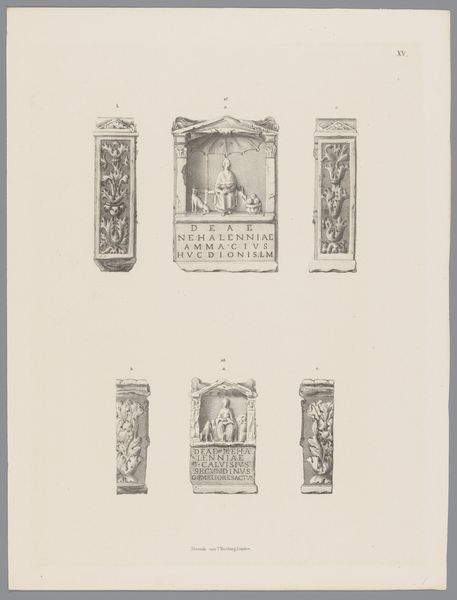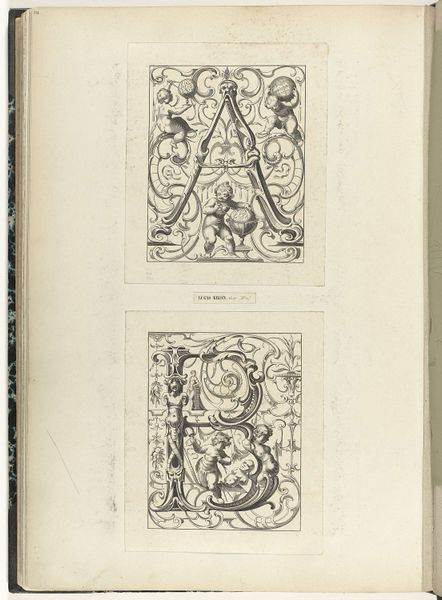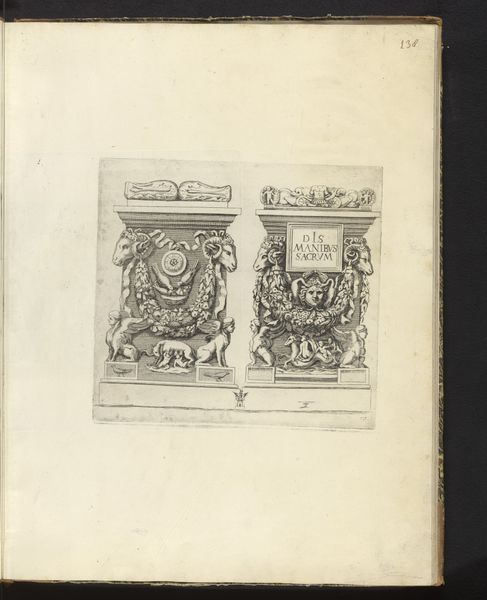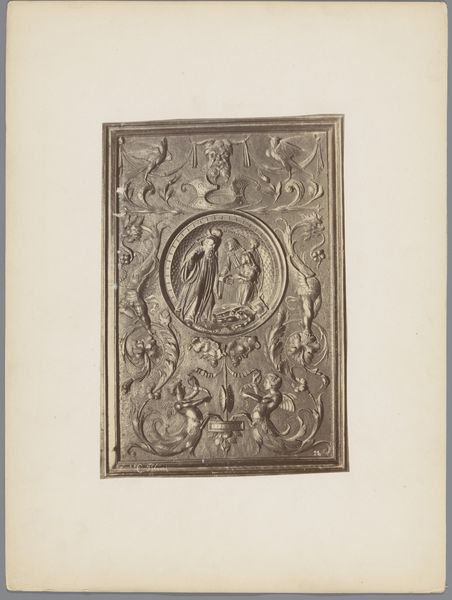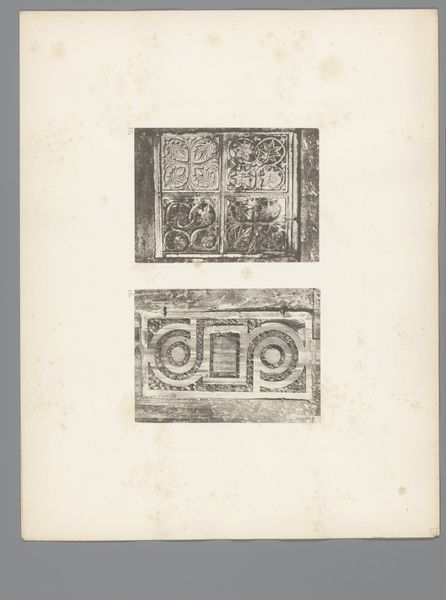
Twee afbeeldingen van reliëfs, vermoedelijk van apostelen, van de San Marco in Venetië before 1884
0:00
0:00
drawing, print, relief, paper, ink, engraving
#
drawing
#
medieval
#
ink paper printed
# print
#
relief
#
figuration
#
paper
#
personal sketchbook
#
ink
#
sketchbook drawing
#
engraving
Dimensions: height 397 mm, width 311 mm
Copyright: Rijks Museum: Open Domain
Editor: Here we have "Twee afbeeldingen van reliëfs, vermoedelijk van apostelen, van de San Marco in Venetië," created before 1884 by Carl Heinrich Jacobi. It looks like an engraving or print, maybe even an ink drawing of reliefs. What strikes me is the meticulous detail; it looks like these artists devoted intense focus to form and texture, but what do you make of it? Curator: Indeed. Observe the two distinct vertical panels. Jacobi masterfully captures the textural contrasts between the smooth faces and hands of the figures, with their elaborate drapery and the surrounding foliate ornamentation. Note the interplay between positive and negative space, the carved figures emerging from and receding into the background, achieved with the strategic employment of ink. Editor: It almost feels like he’s playing with layers and depth within a two-dimensional medium. The level of detail almost tricks you into seeing actual depth as in true sculpture! How does the composition contribute to that effect? Curator: The vertical format of the panels directs the eye upward. Notice the rhythmic repetition of figural forms framed within circular or oval enclosures. These visual units are linked by a continuous vine-like structure which provides overall cohesion to each relief depiction. That contrast between the contained figures and the free-flowing plant design offers a vital visual tension. The linear nature creates an architecture on the paper. Editor: The figures feel both individual and interconnected. They fit perfectly with the structure! Curator: Precisely. Jacobi has organized these reproductions such that no area feels superfluous; each contributes to a visually balanced composition. The medium and arrangement themselves become critical expressive elements. Editor: That’s fascinating; I wouldn't have noticed the rhythm without your insights. The artist created unity and visual impact. Thanks so much! Curator: My pleasure. Close attention to these elements enhances our appreciation, doesn't it?
Comments
No comments
Be the first to comment and join the conversation on the ultimate creative platform.
